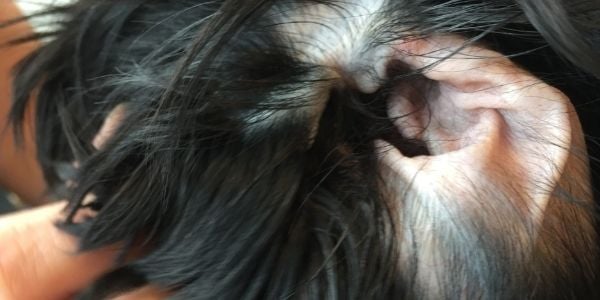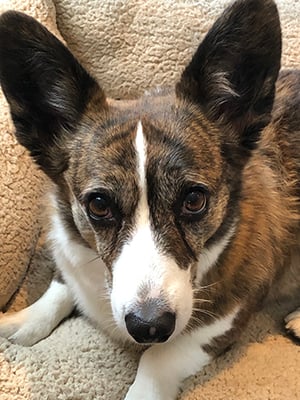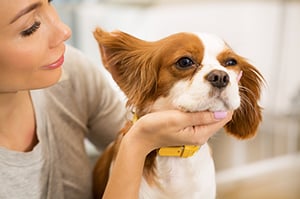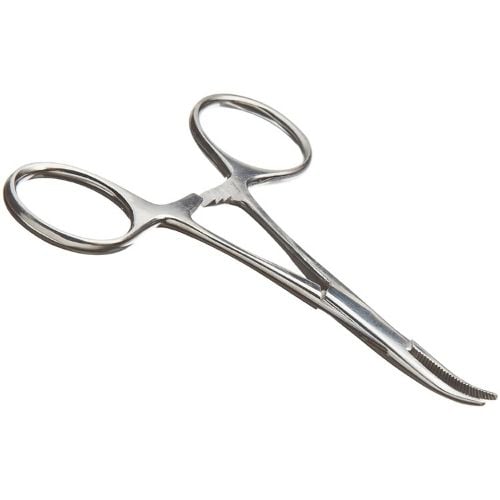
Have you ever looked in your dog’s ears and seen a bunch of hair growing inside? Some dog breeds and mixes naturally grow hair inside their ears, such as Shih Tzus, Doodles, and Poodles.
I’ve noticed that as my Corgi has gotten older, she has thicker fur growing inside her ears than she used to — I call it her “grandpa ear hair.”
Hair inside the ear can make it more difficult for your dog’s immune system to keep levels of yeast and bacteria at a manageable level, can block the flow of air that keeps the ear canal dry, and trap dirt, excess ear wax, and debris inside. So if you’ve noticed that your dog’s inner ears are getting a bit overgrown, what should you do about it?
Table of Contents
Do You Need to Pluck Your Dog's Ears?
Plucking the hair from the ear canal is a controversial topic in the dog grooming world. Some dog groomers claim that they see more ear infections in dogs that get their ears routinely plucked, while others claim just the opposite. Like so many other things in the world, the answer for whether or not you should pluck your dog’s ears is ... it depends!
If your dog has chronic ear infections, plucking inside their ears can help with air circulation, which helps keep moisture in the ear at bay. Plucking also makes giving ear medication easier and more effective since it can make its way all the way into the ear canal.
However, if your dog does not suffer from recurring ear infections, there is no medical reason to pluck their ears as long as the hair is well-trimmed or brushed out and not allowed to mat or block the ear opening. If you're worried about the amount of hair growing in your dog's ears, discuss with your vet what option is best for your dog.
A great alternative to ear plucking is having your groomer trim down the inside of the dog’s ear flap and carefully trim the hair in the ear canal. Keeping it short will prevent the hair from blocking the flow of air or getting tangled in any ear wax.
 I asked Preventive Vet team veterinarian, Dr. Beth Turner, what she thinks about ear plucking:
I asked Preventive Vet team veterinarian, Dr. Beth Turner, what she thinks about ear plucking:
"It isn’t necessary to pluck a dog's ear hair nor recommended for all dogs, even those who suffer from chronic ear infections. As with anything else, there are pros and cons to ear hair plucking and whether to have it done or not depends on a few different factors.
For dogs that have chronic ear infections with copious amounts of hair in their ear canals, having the ears plucked can be beneficial but it needs to be done carefully and only when truly needed. It shouldn’t be done excessively. While ear plucking may improve air circulation in the ear, decrease the moisture and humidity within the canal, as well as decrease the amount of normal ear wax and inflammatory debris that gets trapped in the hairs, it can cause irritation and inflammation.
For patients with chronic ear issues, I usually recommend that the ear hair plucking be done at the veterinary clinic so the canals can be fully evaluated following the procedure. Medication can then be provided to ease any inflammation and irritation so an infection doesn’t develop. For dogs with no history of ear infections and if their ear canals appear normal, I would avoid ear plucking and just be sure to keep the ear hair that extends outside the canal trimmed neatly and routinely clean their ears with a gentle ear cleaner that also has a drying agent. (Learn how to properly clean your dog's hears here.)
Chronic ear infections often have an underlying cause. Therefore, dogs should be evaluated by a veterinarian and checked for potential common causes of chronic ear infections such as abnormal thyroid function or any food or environmental allergies."
How to Pluck Your Dog's Ears
Plucking is often routinely done when a dog is professionally groomed. If you prefer not to have your dog’s ears plucked, just inform your groomer before their appointment. If you feel comfortable plucking your dog's ears at home, you can ask your groomer to show you how it's done.
Note: For dogs with chronic ear infections, do not have their ears plucked at the groomer.
What You'll Need:
Hair Removal Hemostats — this tool is optional as you can use just your fingers to pluck, but these can make gripping the more hard-to-reach hair a bit easier. (Avoid using human tweezers as they usually have sharp edges that can scratch your dog's ear or cause even worse injuries should your dog shake or move their head while you're plucking.)
Should You Use Ear Powder to Pluck Your Dog's Ears?
Ear powder is sometimes used to make the hair easier to grip as it's being plucked. However, Dr. Beth doesn't recommend its use because it can act as a foreign body and cause irritation or infection in the ear canal. Ear powders can also cause significant irritation and damage to the eyes and can irritate the lungs if inhaled.
How to Pluck Your Dog's Ears:
- Firmly grip a small amount of hair surrounding the opening of your dog's ear canal.
- If you can't get a good grip on the fur, use a hair removal tool (hemostat). Never push the tool deep into the ear canal.
- Pluck the hair in a quick and gentle motion. You don't want a hard, steady pull or a tough jerk on the hair. It should come out rather easily (if it doesn't, don't pluck it).
- You only need to pluck enough hair to open up your dog's ear canal; no need to over-pluck!
- After plucking, it's a good idea to clean your dog's ears.
This video by Love of Grooming does an excellent job showing how to pluck a dog's ear hair, how to use clippers to trim around a dog's ear canal, as well as showing examples of ears that don't need to be plucked:
Check Your Dog's Ears Regularly
Whether you pluck your dog's ears or not, it's important to monitor their ear health, as infections can begin and worsen quickly. You should check your dog’s ears weekly for any sign of irritation or infection (this can be easily and quickly done while snuggling on the couch watching TV, it only takes a moment or two):
- Look in their ears for any redness or discharge
- Smell their ears to check for any strong odor (it might smell yeasty, like corn chips, if they’re developing an ear infection)
- Watch to see if they’re showing any sensitivity to their ears being handled — this could be a sign of an infection developing
 If you notice any of the above, make an appointment with your veterinarian to make sure there's not a possible ear infection or other problem. These symptoms should be addressed before cleaning your dog's ears at home, as you could do more damage by cleaning an infected ear. Read more here about when NOT to clean your dog's ears.
If you notice any of the above, make an appointment with your veterinarian to make sure there's not a possible ear infection or other problem. These symptoms should be addressed before cleaning your dog's ears at home, as you could do more damage by cleaning an infected ear. Read more here about when NOT to clean your dog's ears.
Cleaning and drying your dog's ears should be done after plucking, bathing, or swimming. Your dog should get more regular ear cleanings if they have a history of ear issues or have food or environmental allergies that make them more likely to get infections. It's easy to learn how to clean your dog's ears at home, but your groomer or vet can help if you don't feel comfortable doing it yourself.





